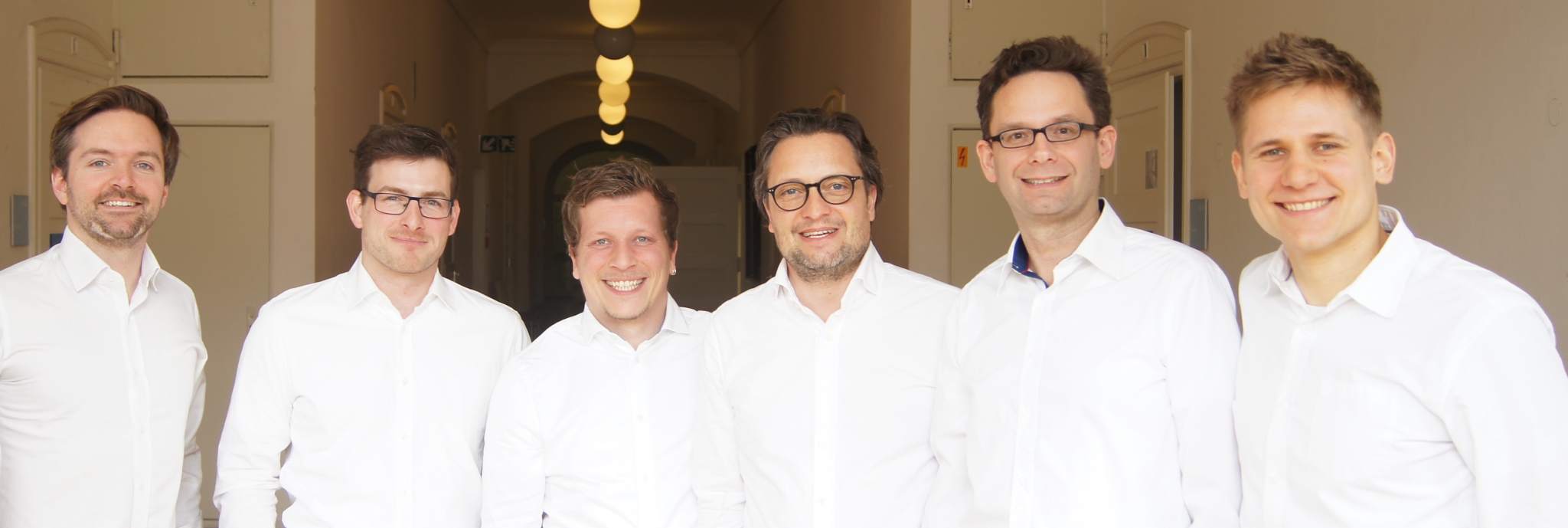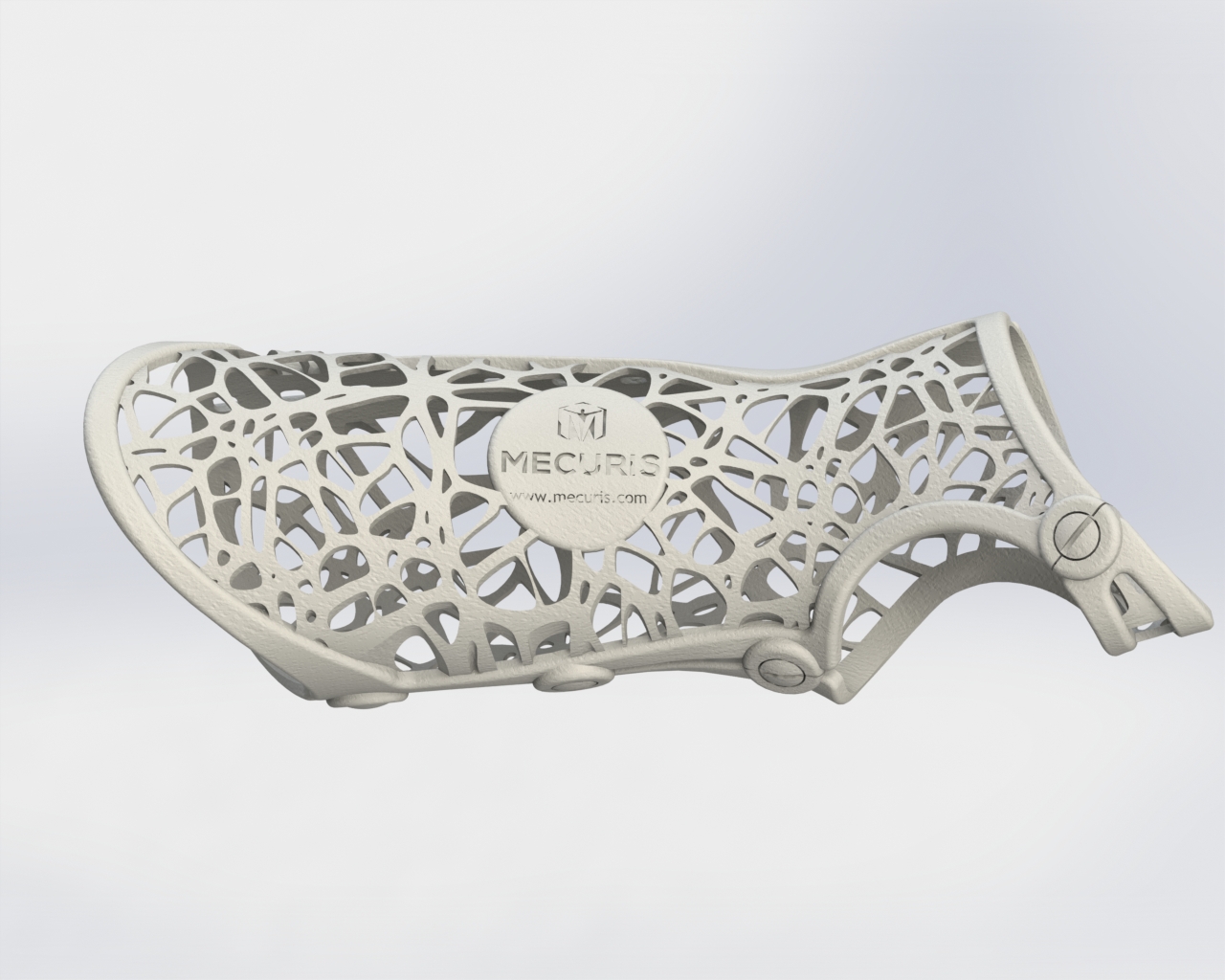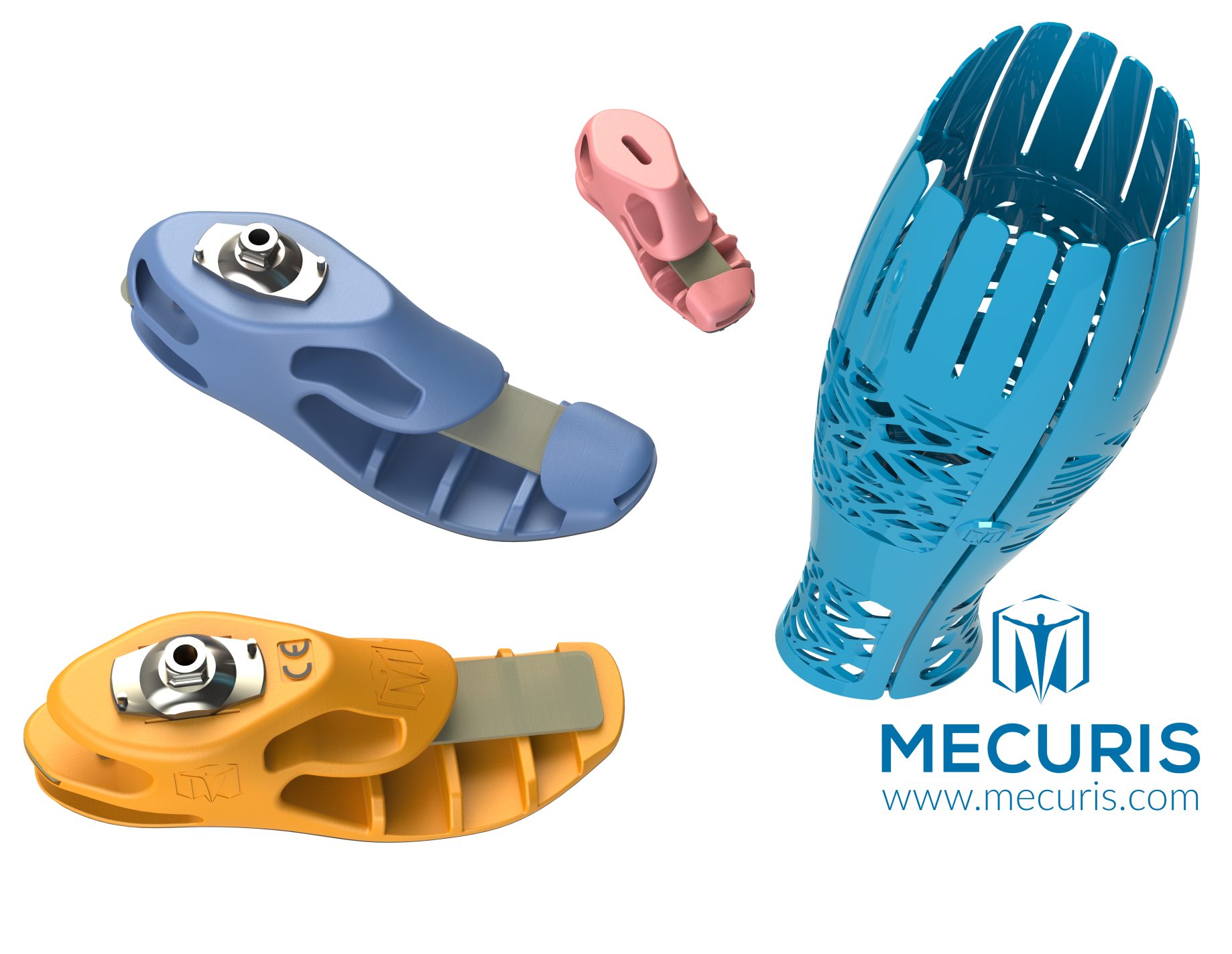This is a guest post in our series looking at the future of 3D Printing. To celebrate 5 years of reporting on the 3D printing industry, we’ve invited industry leaders and 3D printing experts to give us their perspective and predictions for the next 5 years and insight into trends in additive manufacturing.
Manuel Opitz co-founded Mecuris in 2016 as a spin-off from Munich University Hospital (LMU), Europe’s 3rd-largest hospital. Together with its 13 members of staff, Mecuris develops and markets digital automation solutions for made-to-measure orthopaedic care as well as the only CE-certified, 3D-printed, prosthetics currently available in the market.
First ISO-certification and CE-marking of 3D-Printed Prosthetics
According to the International Society of Prosthetics and Orthotics (ISPO), there are some 32 million amputees in the world today. In the United States alone, 30,000 – 40,000 amputations are performed annually. In 2005, there were an estimated 1.6 million individuals living with the loss of a limb. By 2050, this figure is expected to double to more than 3.6 million mainly due to demographic change and dysvascular disease (diabetes). These growing numbers are clashing with a worldwide lack of trained prosthetists / orthotists or expertise.

To increase their productivity and spread expertise worldwide, the orthotics & prosthetics (O&P) industry enters the digital world. 3D technologies enable digital and faster processes for creating (bespoke) prostheses and orthoses:
- Input: 3D scanning, CT or photo reconstruction
- Processing: Automated sizing, manual 3D modelling
- Output: 3D printing and finishing
By combining such technologies into one intuitive solution platform, O&P professionals are thus empowered to 3D-print patient-specific prostheses & orthoses without prior 3D design or 3D printing know-how. This enables 100% customised 3D-printed prosthetics or orthotics and increases productivity by 400% and more for professionals.
There are three main advantages of digital processing and 3D printing of limbs and braces:
- The individual device can be adjusted by the O&P professional with 0.1mm laser accuracy while the function is exactly to the patient’s needs and the design is – for the first time ever – created jointly by technician and patient.
- The quality is higher thanks to industrial 3D printing methods like selective laser sintering (SLS) and digital load simulation, both proven in critical applications in aerospace and automotive industry.
- The digital processing achieves a very high automation and therefore cuts production time by at least 75% from currently months to a couple of days while at the same time lowering costs.
Thanks to central data processing in the cloud, combined with local production in industrial 3D printing centers, the digital process enables fast delivery and prevents export and customs issues. This helps to further drive down manufacturing costs and enables the O&P professionals to focus on their clients, rather than their workshop.

From the perspective of the wearer, the perception of these bespoke, 3D-printed devices is completely turned upside down. The patient aid does not only fit the patient perfectly, but also helps him to pursue an unhindered life. 3D-printing materials allow the wearer of prostheses or orthoses to go swimming or jogging without having to swap their device. Recent ISO tests have also confirmed the load-bearing capabilities of 3D-printed prosthetics up to 6.000 N.
The recent CE-marking of a prosthesis reflects the high quality of 3D-printable designs that have emerged over the last 10 years. CE certification is the seal of approval in the European market. With the CE-certified devices, a manufacturer confirms that all product-specific European directives are complied with. The prosthetic foot from Mecuris is the world’s first 3D-printed prosthesis with CE certification, but will not remain alone for long.
Building High Quality Standards to Ensure Patient Safety
An often neglected factor for widespread 3D printing adoption is (printing) quality. Most examples for 3D-printed prosthetics and orthotics are FDM-printed. However, this projects a false image of the real capabilities and potentials of 3D printing to O&P professionals:
- Low printer and material costs
- Low durability and stability
- Low surface quality
We do not believe that load-bearing prosthetics or orthotics, especially for lower-limb applications, will be printed on low-cost FDM-printers within the next 5 years. This endangers patients and also the whole 3D printing industry in orthopaedics, as one major incident would severely harm the growing trust in this new manufacturing method.
Although digital photography replaced analogue cameras, we still use professional printing servers if we want to receive a high-quality printout. The same holds true for industrial 3D printing. You can already 3D print a brace on an affordable Ultimaker or RepRap at home. However, this is a prototyping machine. It should not be mixed up with an industrial-grade rapid manufacturing machine like a new EOS P396 or P770 for several hundred thousand Euros. The printing quality is on a different level, as is the knowledge required to use one of these machines.

Therefore, O&P professionals should be enabled to work with professional 3D printing service bureaus that know how to deliver high quality. Typical customers of such service providers include medical implant manufacturers, automotive companies and even aerospace corporations like Boeing, Airbus and SpaceX. Therefore, high quality standards are known to such providers.
In order to maintain the quality in the 3D printing center, quality inspections are carried out on a regular basis and quality management ISO-standards like 9001 or 13485 are in place. The printing center furthermore prints material probes within every build volume and tracks machine parameters like laser intensity.
As most O&P professionals do not know how to specify such quality standards and do not have a high throughput as leverage in price and quality negotiations, pooling demand through enablers like Mecuris is vital to achieve instantly good printing results at reasonable costs. More and more service providers approach enablers and also machine OEMs to ask for a set of quality parameters necessary to supply to O&P industry. Quality standards for 3D-printed O&P products are therefore the most important success factor for this industry. They have to be built and maintained over the next 5 years.

Digital Transformation in Prosthetics & Orthotics over the next 5 Years
Digitalisation and 3D-printing will spread within the O&P industry. Production times and in their wake also treatment times will go down. The costs for providing bespoke prosthetics and orthotics will continue to drop year by year. This is generally due to the natural improvements of 3D printers and service providers. However, these will not be the only trend:
- Hybrid manufacturing: Multi-purpose machines that combine additive processes like 3D printing with subtractive processes like milling will rise. Such machines connect the laser-application welding or the metal-powder application method with milling methods and thus enable the machining of a workpiece in one step. Combining additive manufacturing for bespoke parts with subtractive manufacturing for standard parts will also leverage further costs benefits.
- Smart materials: Intelligent materials react independently to altered environmental influences, e.g. temperature increase or mechanical loads. For example, prostheses could be “4D-printed” that adjust their flexibility to the load over time. The prosthesis therefore always has a mechanical stiffness adapted to the activity just performed. Other new materials recognize small cracks starting due to mechanical stress and have the ability to eliminate the resulting material defects themselves. Self-healing materials will enable extremely light but still highly durable prosthetics and orthotics.
- Smart prosthetics: Step counters, as they are known from fitness trackers, will be integrated into the prostheses without great technical effort. The active patient is thus regularly informed about his fitness level. This will speed up rehabilitation and enable monitoring of physical parameters to ensure patient mobility. Other sensors could include strain-gauge-like measuring devices to monitor mechanical stress of the prosthesis (predictive maintenance) as well as of the prosthetic socket and stump.
All in all, digital enablers and high quality standards must ensure that digital transformation is easy and safe for medical professionals and patients. No O&P professional, 3D designer or programmer alone will be able to achieve this. Only interdisciplinary teams comprising medical professionals, engineers, IT specialists, business economists and designers with years of professional experience will succeed in empowering patients to quickly regain their mobility and become active once more.
This is a guest post in our series looking at the future of 3D Printing, if you’d like to participate in this series then contact us for more information.
For more insights into the 3D printing industry, sign up to our newsletter and follow our active social media channels. Let us know your thoughts about this perspective on the future of 3D printing in the comments below.
More information about Mecuris is available here.
Featured image shows Manuel Opitz.



